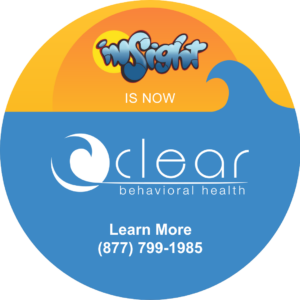The recovery process from drug and alcohol abuse is a journey that takes time, commitment, and ongoing support. For many individuals, a 30-day inpatient rehab program serves as the crucial first step toward sobriety. It provides a structured environment for withdrawal management, learning essential coping skills, and to start building a foundation for a life free from substance abuse. However, it’s also essential to recognize that addiction recovery is not a one-size-fits-all process, and a month-long program is often just the beginning of the process.
In today’s blog, Clear Behavioral Health will delve into why 30-day rehab programs are not enough to maintain long-lasting sobriety and recovery. While inpatient substance abuse treatment offers a valuable starting point and can be critical to the process they should also be viewed as part of a more extensive continuum of care. We’ll explore what individuals can do after completing rehab to continue building upon their foundation for recovery—which may involve treatment options like outpatient programs or sober living arrangements—and emphasize the crucial role of a supportive community in the recovery process.
Pros and Cons of a 30-Day Rehab Program for Drug Abuse
Before discussing what comes after 30-day addiction treatment for long-lasting recovery, it’s critical to understand the significance of 30-day treatment programs in the treatment process. Alcohol and drug abuse treatment facilities serve as a lifeline for many individuals struggling with drug or alcohol addiction and dual diagnosis. Additionally, the National Institute of Health provides a resource that contains the treatment improvement protocol which are best practice guidelines for drug and alcohol rehab programs. These guidelines provide an in-depth view of the multiple facets of addiction treatment.
Pros of 30-day Rehab
Some of the benefits of attending a rehab facility for addiction treatment can include:
- Structured Environment: A 30-day rehab program provides a controlled and structured environment that is conducive to the early recovery process. It removes individuals from their everyday triggers and temptations, allowing them to focus solely on their sobriety and engage in vital treatment services onsite.
- Supervised Withdrawal Management (Medical Detox): For those with physical dependencies on substances (such as opioids, benzodiazepines, or alcohol), supervised withdrawal management is often a necessary first step in the recovery journey. Medical professionals can manage withdrawal symptoms by prescribing treatment medications, ensuring safety and comfort during this challenging phase before the treatment process proceeds.
- Education and Skill-Building: 30-day Inpatient rehab programs offer education about substance use disorder, coping strategies, relapse prevention techniques, and life skills training. These can be invaluable tools for individuals working to overcome substance abuse and drug addiction, learning new coping strategies to carry over into their post-rehab world.
- Peer Support: Group therapy and peer support provide individuals with opportunities to connect with others facing similar challenges. A sense of community can be profoundly comforting and motivating—and is also vital in the post-rehab experience as well.
Cons of 30-day Rehab
Some of the downsides to short-term residential treatment can include:
- Overlooking Mental Health Concerns: Short-term treatment for drug and alcohol addiction may not provide adequate time to address co-occurring mental health conditions such as mood and anxiety disorders.
- Overall Success Rate: Studies have shown that short-term treatment has a much lower success rate compared to long-term substance abuse treatment and treatment plans that include aftercare.
- Simply, Not Enough Time: The 30-day mark is a critical point where an individual may enter post-acute withdrawal and also start to notice positive changes. Treatment should not end here, it should be reinforced.
Why Long-Term Treatment is Superior
While the benefits of inpatient treatment are important to the process, it’s important to recognize that addiction is a chronic and often relapsing condition. As such, completing a 30-day program is a significant achievement, but it’s only the first step. In reality, the full length of drug rehabilitation should be much longer. At Clear Behavioral Health, we implore our clients to participate in the full continuum of care that we offer. Individuals who stay for our inpatient detox and withdrawal management, residential treatment center, and intensive outpatient program have a higher success rate.
Our recovery model, from start to finish, is around 4-5 months which gives individuals plenty of time to address co-occurring mental health disorders and practice the learned coping skills and strategies from rehab while receiving support as they make the transition from our addiction treatment center to living life sober. It is very common to encounter struggles after rehab such as temptations to use, stressful situations, or mental health symptoms. Having ongoing support from a treatment program while adjusting to normal life can mitigate the risk of relapse and increase the chances of a successful recovery.
Continuing Addiction Treatment After Rehab
Recovery is not a destination—it’s a lifelong journey. As such, to maintain your sobriety beyond the initial 30 days of rehab, individuals should strongly consider continuing their addiction treatment along several fronts for ongoing support and maintenance.
Wondering what to do after rehab? Participating in one or more of the programs below will help solidify a foundation for recovery:
Outpatient Treatment
Aftercare treatment programs are designed to provide ongoing support and therapy after completing rehab. These programs, such as outpatient treatment centers and partial hospitalization programs, offer a structured way to reinforce the coping skills learned in drug and alcohol treatment programs and address any challenges that arise during the early stages of the recovery process. Outpatient rehab is an intensive program that often incorporates multiple successful treatment methods and evidence-based therapies as part of the treatment plan.
Sober Living
Sober living homes offer a supportive and substance-free environment for individuals in early recovery. They provide a bridge between the structure of drug rehab programs and the independence of returning to everyday life. Sober living homes are an ideal option for young adults in recovery as they often have house rules and mandatory meetings, creating a sense of accountability during the transitional period.
Individual Therapy
Continuing to work with a therapist or counselor in regular individual therapy sessions can be highly beneficial in several ways. It provides a safe space to explore underlying issues, triggers, and emotions that may contribute to addiction, along with assisting you to complete a crisis and relapse prevention plan. Additionally, it provides an opportunity to address mental health concerns and utilize behavioral therapy to overcome substance abuse issues.
Support Groups
Joining support groups like Alcoholics Anonymous (AA) or Narcotics Anonymous (NA) can be a vital and continuing lifeline to the recovery community. These groups offer ongoing accountability and community to people in all stages of their recovery journey.
Building a Strong Recovery Community After Rehab
A sense of community can play a pivotal role in the recovery process. While in rehab, individuals have the opportunity to connect with peers and build a strong network of support. However, it’s essential to continue fostering these connections after leaving the treatment facility as well:
- 12-Step Meetings: Many individuals find solace and strength in attending 12-step meetings like AA or NA. These meetings provide a structured and supportive environment where individuals can share their experiences, gain insights, and receive encouragement from others in the recovery journey.
- Sober Social Activities: Engaging in social activities that do not involve substance use is important. Building a network of friends who support your sobriety can help to prevent relapse and foster a better sense of belonging.
- Mentorship: Consider finding a sponsor or mentor who has successfully maintained long-term sobriety. This person can provide guidance, accountability, and a wealth of wisdom based on their own experiences in recovery.
- Family and Loved Ones: Open and honest communication with family and loved ones is essential for long-lasting recovery. Educating them about addiction and involving them in your recovery journey can strengthen your support system and help you feel less isolated.
Access Quality Inpatient Care and Ongoing Community Support at Clear Behavioral Health
While 30-day rehab programs offer a valuable start on the path to recovery, they are just the beginning of a lifelong journey. To maintain sobriety, it’s crucial to recognize that ongoing treatment and support are required after rehab is complete. Aftercare programs, sober living, intensive therapy, and support groups all contribute to building a solid foundation for lasting recovery. Additionally, nurturing a strong recovery community by continuing to engage with peers and loved ones can provide the encouragement and accountability needed to thrive in sobriety.
Recovery from substance use disorders is possible, but it requires dedication, perseverance, and a commitment to building a life free from the chains of addiction. By recognizing the importance of ongoing care and support, individuals can navigate the challenges of early recovery and look forward to a brighter, substance-free future. Clear Behavioral Health offers both a high-quality inpatient substance abuse program—tailored to your specific needs—as well as partial hospitalization programs and intensive outpatient treatment for ongoing support after an inpatient program. These levels of care and points of post-rehab engagement help give you the best possible chances of success after the initial phase of treatment is complete. Give us a call today to start exploring your options for recovery.

